Michael Brown
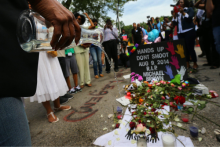
Ten years ago, Michael Brown, an unarmed Black teenager, was killed by a police officer in Ferguson, Mo. Young people gathered at the local police station refusing to accept this as just another “unfortunate incident.” They demanded answers and accountability; their determined stance sparked a movement for racial justice that this nation had not experienced in decades.

“Something I often heard was that ‘there’s not enough Black Catholics.’ [That] the numbers of Black Catholics are not big enough to justify doing a survey into this community. But that was in complete contradiction with what I was seeing when I was at these rallies and with people who were engaging with the Black Lives Matter movement.”
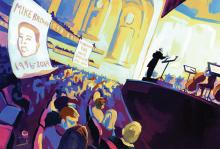
IN FALL 2014, the St. Louis Symphony Orchestra performed Brahms’ Requiem on a Saturday evening two months after the murder of Michael Brown Jr., at a concert hall about 10 miles from Canfield Green, where Brown was killed and his adolescent body left out in the Missouri August sun for four and a half hours.
That summer and fall, people in the city and county of St. Louis lived in the tension of waiting — we were waiting for a grand jury to make a decision. Not a verdict about the officer’s guilt: The grand jury was tasked with deciding whether this murder was even a murder at all — whether anything happened on Aug. 9 that could even be considered maybe a crime. Maybe worth investigating. Or whether it was just a regular day’s work.
As intermission was ending and folks were back in their seats, just as the orchestra was regathered and the conductor was raising his baton, a small group of ticketholders in the audience stood up and sang. In singing, they asked the audience, made up largely of people who could choose whether or not they were impacted by the grand jury’s decision that loomed over the city like the shadow of death, to make a decision of their own. They stood up, one by one, and joined their voices in an old labor song: “Which side are you on, friend, which side are you on?” they sang. “Justice for Mike Brown is justice for us all. Which side are you on, friend, which side are you on?” They hung banners made of bedsheets over the balcony; one that echoed the piece being performed that evening was painted: “Requiem for Mike Brown, 1996-2014.”
These protesters brought this question — this disruption — into a space that could’ve kept it to business as usual. They sang the two refrains in repetition, almost like a Taizé chant, for several minutes, then they left the hall together, chanting a chant that at the time was still brand-new to most Americans: Black Lives Matter.
The disrupters left to a mix of silence and applause from the audience and the musicians. The concert continued, but the question hung in the air. It’s the same question that hangs in the air of many of Jesus’ disciple-calling stories, and it’s certainly the question that pervades Matthew’s telling of Jesus’ good news.
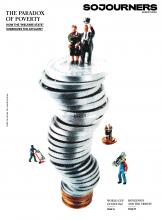
How the “welfare state” is designed to subsidize affluence rather than fight poverty.
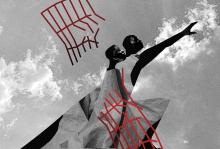
BLACK LIVES MATTER. In the years since 17-year-old Trayvon Martin was murdered in his hoodie carrying Skittles, we have learned why this phrase is not simply a consequence of all lives mattering. The world systematically devalues Black life, turns Black life into death-bound life, and it is our task — as justice seekers and as Christians — to embrace Black resurrection.
Politically that makes sense, but what does it mean theologically? Surely Christianity proclaims that all might be saved, independent of skin color. A half-century ago, James Cone and fellow Black theologians embraced this theological challenge head-on. They charged that the possibility of life after death for any individual is inextricably linked to the struggle against the death-dealing forces of white supremacy. How might we fill out this insight today, with Black Power slogans themselves finding new life and new form as activists embrace Black joy, Black excellence, Black rage, Black love, and Black dignity?
In a definition that has rapidly gained traction in activist circles, Black prison abolitionist and scholar Ruth Wilson Gilmore defines racism as “the state-sanctioned or extralegal production and exploitation of group-differentiated vulnerability to premature death.” Black studies scholars have refined and deepened this claim, arguing that anti-Black racism names a system of laws, institutions, feelings, and even forms of seeing and thinking that make Black life particularly vulnerable to premature death. Slavery may have ended in the 19th century, but many of the structures and habits that made slavery possible, that made it plausible for Black human beings to be treated as less than human, persist, and those structures and habits function by making Black life precarious. One false move, and the police officer or prison guard or neighbor or privileged “Karen” may invoke the violent power of whiteness to put an early end to Black life.
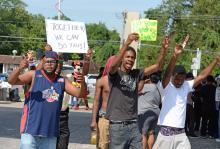
The test for religious leaders in this context has been nothing short of a demand for a prophetic voice which sees, names, and challenges the reality of a system that destroys the lives of some while parading as “law and order” for others. Faith leaders are finding themselves tangled in a quagmire of competing rhetoric about what makes for peace, walking the line of proclaiming prophetic vision amid a culture, a church, and a people tightly wrapped in the clutches of white supremacy.

Aug. 9 is a good day to remember that the United States stands alone in the fire and fury we have brought to the world. There is only one nation that has used a nuclear bomb on people — the United States, and we did it twice in one week. The United States dropped the "Little Boy" bomb on Hiroshima on Aug. 6, 1945; three days later we dropped the "Fat Man" bomb on Nagasaki. More than 100,000 died instantly that week, and tens of thousands more in the weeks to follow.

I believe some from the older generations who were a part of the civil rights era have forgotten their roots in civil disobedience. Instead of inviting young people to be a part of planning, they speak from podiums, give grand introductions, tout their lengthy titles and positions held. Many are resentful and critical of younger activists. They believe the news media’s portrayal of Black Lives Matter instead of getting to know who these young people are.
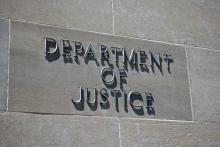
Attorney General Loretta E. Lynch filed a civil rights lawsuit against Ferguson, Mo. after the St. Louis suburb rejected an agreement with the Justice Department that would have reformed their criminal justice system. “Their decision leaves us no further choice,” Lynch said.
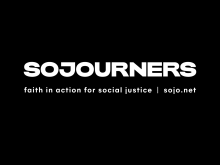
JIM WALLIS’s new book is so timely that he has been wishing, for months, that he could update its pages as each new headline about racism breaks in national news.
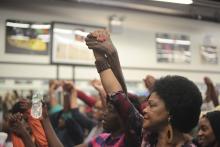
7 Our ancestors sinned the great sin of instituting slavery; they are no more—but we bear their shame.
8 The system of slavery and institutionalized racism ruled over us,
and there is no one to free us from their hands.
9 We get our bread at the risk of our lives because of the guns on the streets.

It can be dangerous to be black. In 2012, a black person was killed every 28 hours by law enforcement officials or self-styled "vigilantes." About 27 percent of African-Americans live below the poverty line. Black families are seven times more likely to be homeless than white families. African-Americans are four times more likely to be murdered than the national average.
It's not about semantics. It's about systems (and minds) that need to be changed for the betterment of the future. And that future will, in fact, be better for all lives.
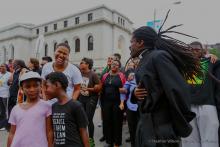
PHOTO ESSAY: On Monday, fifty-seven people were arrested as part of the #UnitedWeFight march and peaceful civil disobedience at the Thomas F. Eagleton U.S. Courthouse. The march was in commemoration of the year-long resistance sparked in #Ferguson by the murder of #MikeBrown.
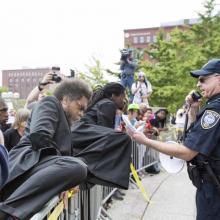
The latest killing happened two days before the 1-year anniversary of Michael Brown’s death when Christian Taylor, 19, crashed his SUV through the window of a car dealership in Arlington, Texas. Officers shot him in the course of a struggle. In fact, as I write this, there have been 601 lethal police shootings in 2015, 24 of them unarmed black men, according to an ongoing independent analysis by Washington Post: That’s an average of two unarmed black men shot dead by cops per month since January. This number does not include police shootings of black women, police killings that did not involve gunfire, or deaths while in police custody. Freddie Gray’s and Sandra Bland’s deaths are not included in the Washington Post tally.
Over the course of the year since Michael Brown died, we have learned critical lessons that have fueled the movement, bringing together young activists, clergy, and evangelicals in unlikely, yet cohesive alliance.
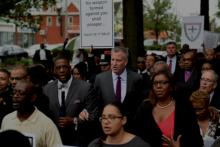
And here suddenly the letter lurches forward in time, slides through decades and lands squarely in our laps in 2015. It seems almost as if he isn’t talking about men and women of the past, but about Michael Brown, Eric Garner, Clementa Pinckney, Sharon Coleman-Singleton … the list is so sickeningly long.
He goes on to record injustices in Birmingham: “There can be no gainsaying of the fact that racial injustice engulfs this community. Its ugly record of police brutality is known in every section of this country. Its unjust treatment of Negros in the courts is a notorious reality. There have been more unsolved bombings of Negro homes and churches than in any other city in this nation.”
Wait. What are we talking about? Birmingham, or Cleveland? Ferguson? Charleston?
“Letter from a Birmingham Jail” has always itched at me, unsettled me. It bothers me because King isn’t writing to political leaders, but religious leaders, people of faith, people who follow the same Jesus as me.

Over the past year, #blacklivesmatter has taught me that the work of theology is not limited to the hallowed halls of academic institutions or sermonic reflections from prestigious pulpits on Sunday mornings. At community meetings and rallies, I learned new hymns in the form of movement chants. I learned that protest can be a form of prayer. #Blacklivesmatter is more than a hashtag. It is a call for repentance. It is an invitation into a state of prophetic grief and collective lament that does not anesthetize us from our pain but allows us to reconnect to the depths of our humanity by feeling, together, the torment our silence on issues of racial injustice has sown. It is only together that we will be able to actualize the transformation God is calling us to effect in this world.

When called to lead, Solomon didn’t seek his own glory, his own comfort, his own peace. Solomon sought the shalom of all his people. So, too, did the leaders above — and God said yes.
The movement to protect black lives gestated in the womb of our nation for years before Ferguson, but God birthed a movement in that place — in part because of wise and discerning leaders of faith.
May God help us all to enter the one year commemoration of Michael Brown’s death and the uprising in Ferguson, Mo., by reflecting on how we responded to God’s question a year ago: “What should I give you in the face of black death?”
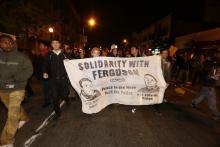
One year after the shooting and killing of Michael Brown, #FergusonTaughtMe is trending on Twitter. Activists, faith leaders, intellectuals, and everyday members of the movement have used the hashtag to explain how Ferguson fundamentally altered their racial consciousness. Embedded are a few tweets from Christian leaders who shared how Ferguson changed the way they do faith.
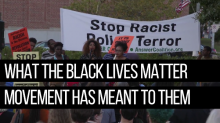
Sunday marked the 1-year anniversary of the killing of Michael Brown in Ferguson, Mo. Both in Ferguson, and across the country, the memorials and marches were held to remember those lost to police violence. Here in Washington, D.C., we attended one such demonstration and asked protesters what the #BlackLivesMatter movement has meant to them over the past year.

In honor of the one-year anniversary of Michael Brown’s death in Ferguson, Mo., Sojourners asked a variety of faith leaders — Catholics, Baptists, Muslims, agnostics, evangelicals, and humanists — to reflect: How has your faith been challenged, affirmed, or deepened by the Black Lives Matter movement? Has your theology changed? And, most importantly, what are we being called to do?
Here’s what they said.